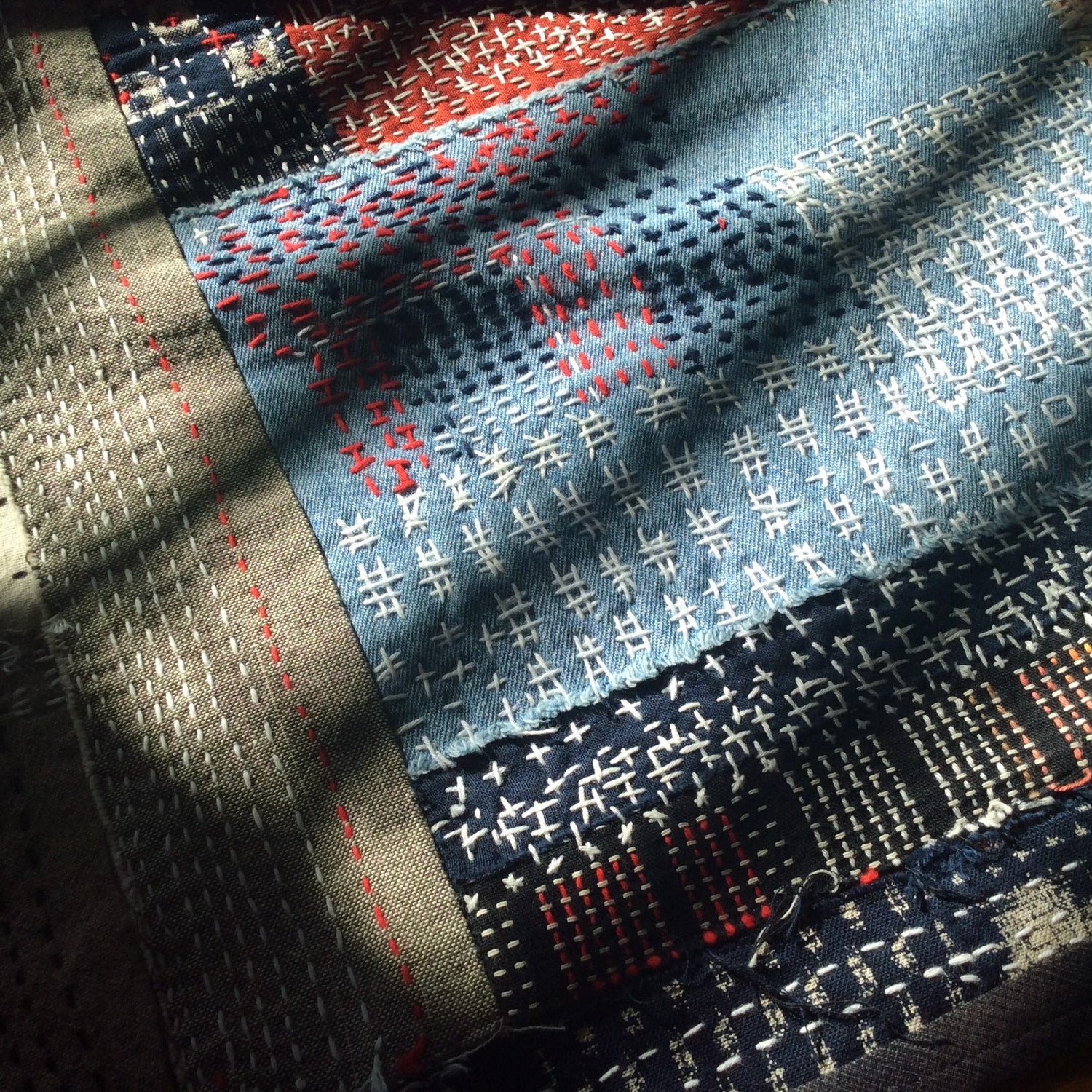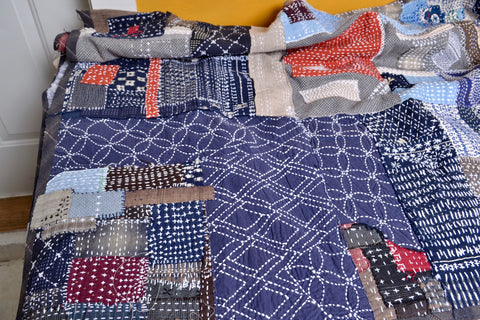
Some boro stitching thoughts and examples

This boro book cover is still my favourite of all the pieces I have stitched. You can see that I used some scraps of previous projects in it, like the flax leaf fragment in the bottom left corner, and the bit of an effort at piecing a log cabin block on the bottom left corner.
One of the beautiful things about boro stitching is that it can give a home to the bits of projects "gone sideways" that are too good to throw away and not good for anything else!

My second favourite boro project, my slippers

Before you can make a project from a boro stitched cloth you need to make the boro cloth, and that means stitching a lot of patches to a backing cloth.

You can lay them out and baste or pin them to the backing, and then stitch but I just add one at at time to the backing fabric and hold it in place until I have it stitched down. It's a messier and random method but very relaxing, and I enjoy it.

Possibly I enjoy it too much! I keep making these. They just get stuffed in a box until one day I have a lot of them.
Once I took all I had made and stitched them together into a boro quilt which looks like this:

I wouldn't call it pretty. I'd call it home-y, interesting and comfortable. Like other textiles that contain hours of someone's life in its construction, it feels valuable.
Which is a good thing since I keep making more pieces of boro cloth!
And now you know why I have an Instagram hashtag #stillcantstopstitching"

I don't stitch straight rows and my fabrics are not laid out in any orderly way. And I like to do more stitching on the fabric pieces after they are stitched to the backing, just randomly doodling with my thread and needle.

How to boro stitch is really a matter of what you enjoy, plus what is functional for your project.
The right thing to do is to suit yourself!

This was a fun project. I made Tilda doll and dressed her in a sashiko top and boro pants. Again you can see the use of some scraps of sashiko stitched fabrics that were left over from other sewing projects. I can never throw away handmade or hand stitched scraps.
Here is the finished Doll:

She has a eyes now. She wasn't quite finished then.
I guess this is my third favourite boro piece. It keeps its shape because it has a layer of Soft & Stable between the outer and inner fabric. (Let me digress to say that Soft & Stable is what you want for any project that you want to have keep its own shape when empty)

When you are stitching your scraps of fabric together you can use a simple sashiko (or running stitch) and stitch in straight rows and it will look so good.
You can also play around with adding more stitches if you enjoy doing that. If you know how to do Hitomezashi sashiko stitching you already know how to build designs from repeating individual stitches. But you can also just make up your own if you want. I do that all the time because it is so relaxing to have no rules.
I believe this is the boro fabric piece I made and used to cut my slippers from in the earlier photo.

Although I like to do it, there is no reason for such heavy all over stitching.

Did I already say that you should do your boro stitching in the way that pleases you the most? If not, I'm saying it now.
Happy Stitching,
Susan


